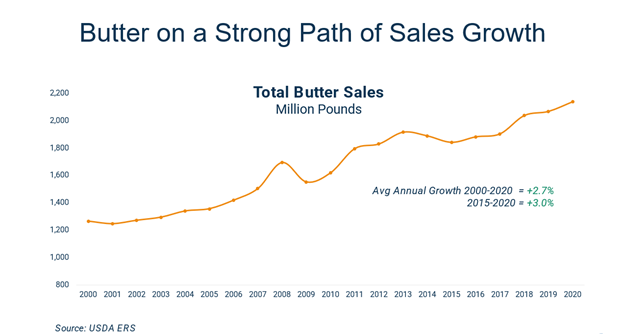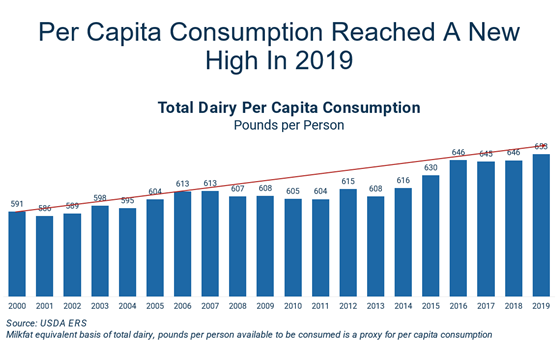As we hear heartbreaking accounts of the COVID-19 resurgence depleting resources in rural communities and overwhelming already stressed rural health care systems, we can’t help but feel a deep sense of frustration. After so much progress in fighting the pandemic – the decisions we’ve all made to stay safe, the work to develop a vaccine and a distribution system that could reach every American — we still have so far to go. As a farmer, a food worker or an input provider, we know that you play a critical role in the health of our rural towns and businesses. We know that you take great pride in helping keep your communities vibrant. Unfortunately, the virus is still threatening that vibrancy in many rural areas and indeed, in our nation.
That’s why, as leaders of agricultural organizations, we are speaking up to support vaccination efforts in our rural communities and in all communities nationwide. To enable informed choices, it is critical that accurate information be heeded — and there has been no shortage of scientific data that supports the effectiveness and necessity of the COVID-19 vaccines. We know that you make science-based decisions every day—whether those decisions are how best to protect your crops or your livestock. Now, however, we need your help in ensuring the health of your families and your communities, which is why we urge you to support vaccinations in your community.
We know that you are no stranger to vaccines. Those of you who raise livestock administer vaccines regularly to protect your animals. Agriculture pioneered the development of safe COVID vaccines decades ago. Shots that prevent bovine coronavirus have been available since the 1970s. Technological advances have long benefited agriculture, but the development of safe, effective COVID vaccines for humans has only further confirmed our already-strong appreciation for science and research. We hope this appreciation for science and research is a lesson that will long outlast the pandemic. We saw the promise of vaccination against COVID early on: We urged the federal government to make farmers and other essential food workers a top vaccination priority. We know many of you have led vaccination efforts your communities across the country, and for that we are grateful.
Recent events, however, show us that much more work needs to be done. The need for shots remains, as does the need to share accurate information that addresses people’s concerns. There will always be some people who, for whatever reason, can’t or shouldn’t get a shot; but these numbers are very small. If you have questions, please talk to your doctor or a local medical expert you can trust to give you the facts.
The rise in cases as a result of the Delta variant only further highlights what’s been true all along: For a vaccination campaign to work, people must individually decide to protect themselves, their families, and their communities. The pandemic’s toll on rural health and businesses, as well as our broader economy, won’t ebb until that happens. The key to defeating coronavirus, like it was for polio, measles, and other diseases that left their mark across the countryside, is the vaccine. Success will only be achieved one decision—and one person—at a time.
You know how powerful an individual decision can be. The decision you make on your farm today will feed your family and consumers around the world. Your choices and your dedication keep families and communities healthy. And just like these farm decisions, the decisions you make now can help ensure the months and years ahead are much brighter as we wrestle COVID-19 to the ground. In farm country, we talk a lot about rolling up our sleeves to get the job done in our fields and pastures. Now it is time that we join together and roll up our sleeves one more time to get this job done.
Sincerely,
Tara Artho, Texas Grain and Feed Association
William Beaton, Agri-Mark, Inc.
Jay Bryant, Maryland and Virginia Milk Producers Cooperative Association
Stephen Censky, American Soybean Association
Chuck Conner, National Council of Farmer Cooperatives
Daren Coppock, Agricultural Retailers Association
Jon Doggett, National Corn Growers Association
Zippy Duvall, American Farm Bureau Federation
Stephanie Eckroat, Kansas Dairy Association
Dr. Barbara Glenn, National Association of State Departments of Agriculture
Allan Huttema, Darigold
Janet Klein, Maryland and Virginia Milk Producers Cooperative Association
Daryl Larson, Bongards Creameries
Andrew LaVigne, American Seed Trade Association
Kirk Leeds, Iowa Soybean Association
Chuck Lippstreu, Michigan Agri-Business Association
Jim Mulhern, National Milk Producers Federation
Chris Novak, CropLife America
Steve Records, Grain Elevator and Processing Society
Corey Rosenbusch, The Fertilizer Institute
Greg Schlafer, Foremost Farms USA
Jayne Sebright, Center for Dairy Excellence
Ron Seeber, Kansas Grain & Feed Association
Mike Seyfert, National Grain & Feed Association
Joseph Smentek, Minnesota Soybean Growers Association
Jim Sutter, U.S. Soybean Export Council
Owen Wagner, North Carolina Soybean Producers Association
Betsy Ward, USA Rice
Gary Wheeler, Missouri Soybean Association
Richard Wilkins, Mid-Atlantic Soybean Association







